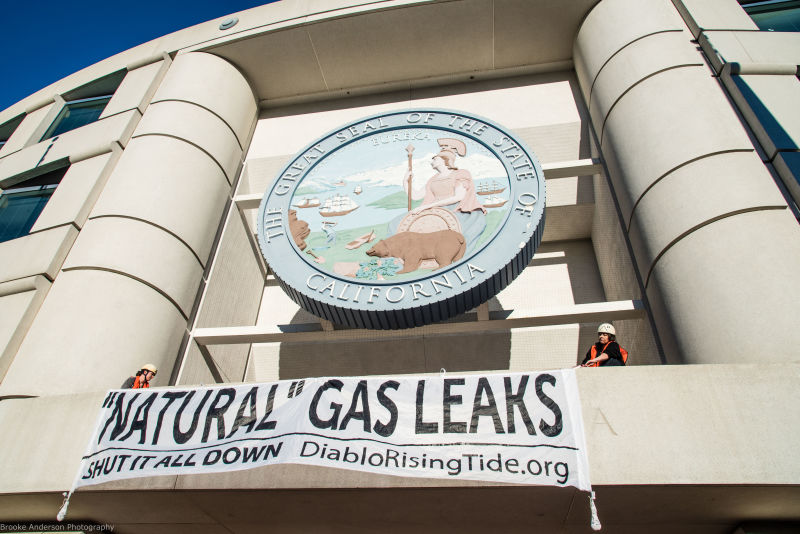“The Bay Area uses natural gas storage to balance electricity demand and ensure reliability of the electric service,” O’Connor said.
But Porter Ranch residents probably aren’t the only ones caught unaware by the presence of a natural gas field near their homes, said Maya Golden-Krasner, a lawyer for the Center for Biological Diversity. Among the 14 natural gas storage fields in California is one in Contra Costa County near Concord.
“That’s maybe half a mile from residences, businesses and even a preschool,” she said. “And there’s planned development to come even closer, whereas in PR people lived about a mile from the facility.”
Northern California is already attuned to the risks of natural gas because of the 2010 San Bruno gas explosion that killed eight people. That incident prompted PG&E to scrutinize its spaghetti-like network of gas lines — thousands of miles throughout Northern and Central California — with airplanes, cars, cameras and people.
Still, this high-profile leak is serving as a wake-up call specifically about natural gas storage, said EDF’s O’Connor. “We know that when the Aliso Canyon nightmare started, everybody else started to take a hard look at their own facilities to see if that was something that could happen to them.”
That includes independent natural gas operators, whose profit margins already are under siege by the growing availability of renewable energy.
Efforts to prevent the next leak from a storage field are taking several tracks, including better disclosure to local communities about risks, requirements for safety equipment and procedures and better monitoring, of both activity at wells and their condition. For example, current rules require underground safety valves only on “critical” wells within 300 feet of homes or schools, rather than on all wells.
U.S. Sen. Barbara Boxer and other members of Congress are pushing the Pipeline and Hazardous Materials Safety Administration to make national rules governing natural gas fields.
“They’re getting old,” Boxer said. “All across the country we are seeing the results of an aging infrastructure. The people of Flint, (Michigan), because these pipes were filled with lead, were poisoned. And people were sickened here in Porter Ranch.”
Federal lawmakers say PHMSA could make “baseline” regulations for gas fields. That’s never happened before because PHMSA, within the Department of Transportation, has focused on the movement of gas. State legislators point out that seven agencies share responsibility over gas fields under California law.
Eight separate investigations are underway about the origins of the Porter Ranch leak, which began almost four months ago. Public officials say they may also reveal more problem areas requiring more action.
That’s not enough for some residents and activists, who say that investment in natural gas should slow in favor of cleaner energy.
Injection of natural gas into the Aliso Canyon storage field was halted temporarily by an executive order of Gov. Jerry Brown in January. Next week, Sacramento lawmakers will consider continuing that moratorium until independent inspectors can verify the safety of all the wells in that field.
Some residents of Porter Ranch continue to argue that the Aliso Canyon storage field should be shut down permanently.
And Tuesday in San Francisco, California Highway Patrol officers arrested protesters Lisa R. Prochello and Kelsey Baker, members of Diablo Rising Tide, after the two scaled the entrance to the building housing the California Public Utilities Commission and deployed a banner beneath the giant seal of the State of California on the front of the structure.
